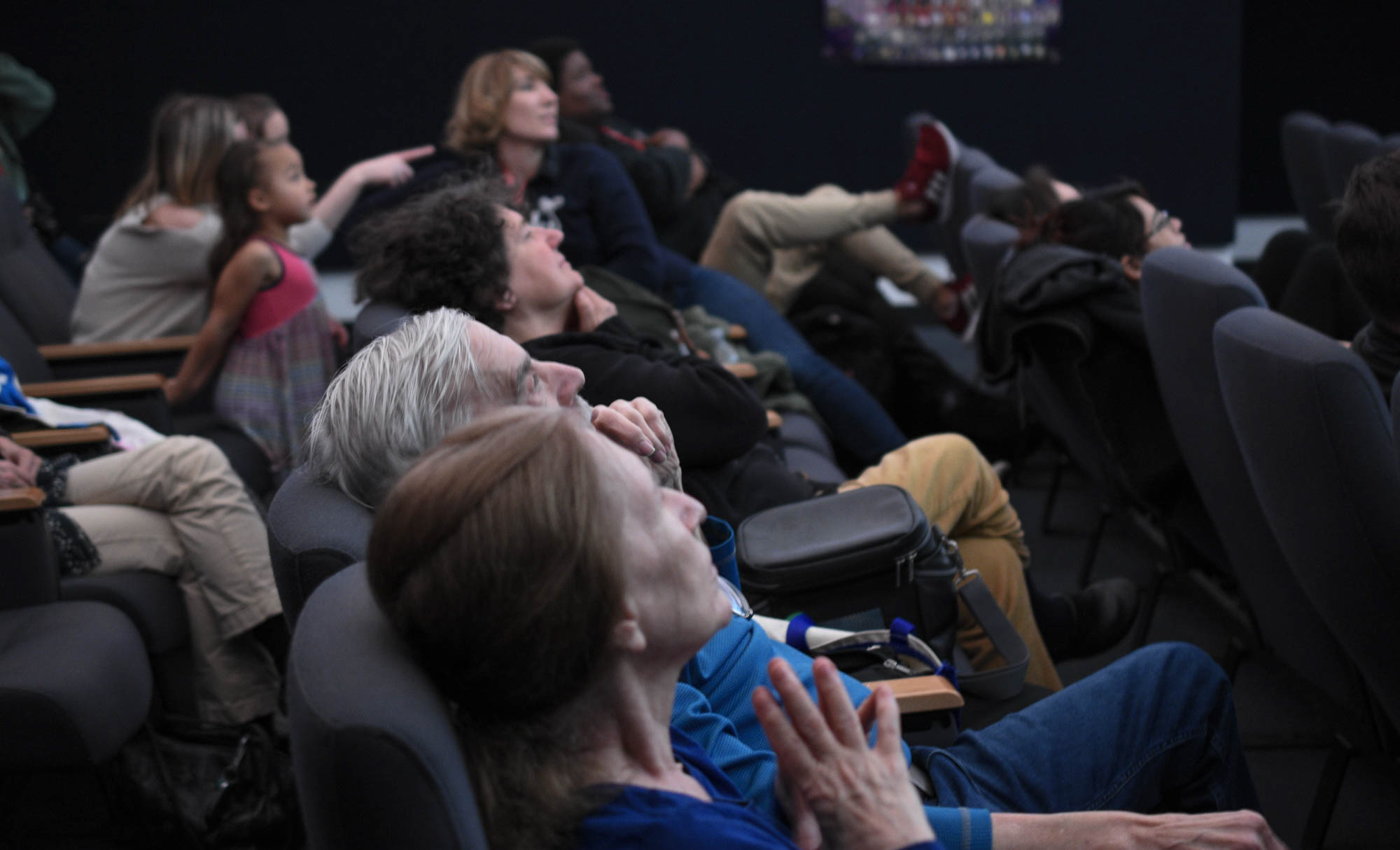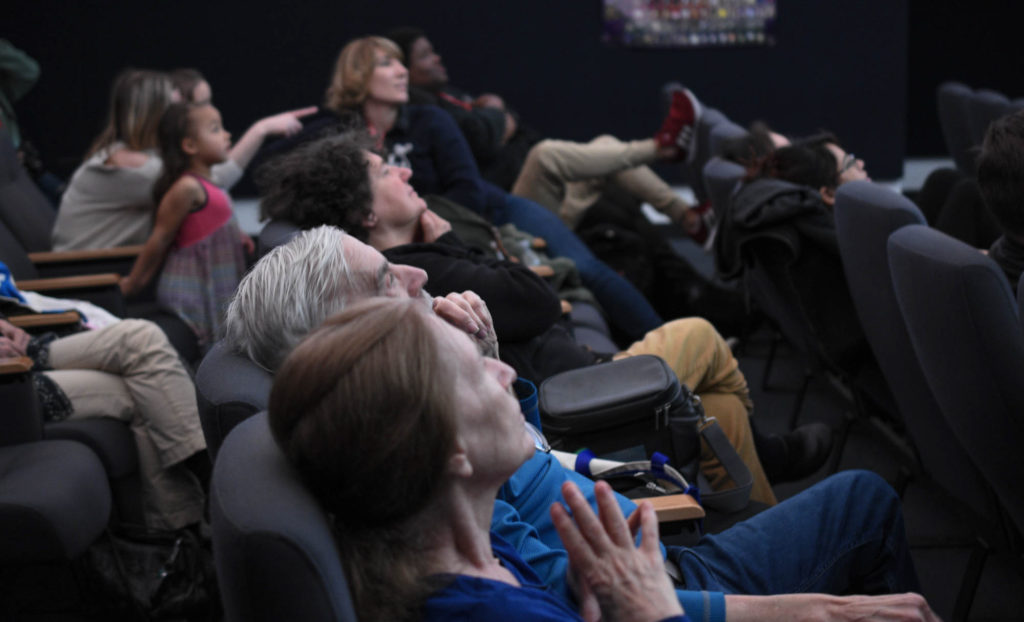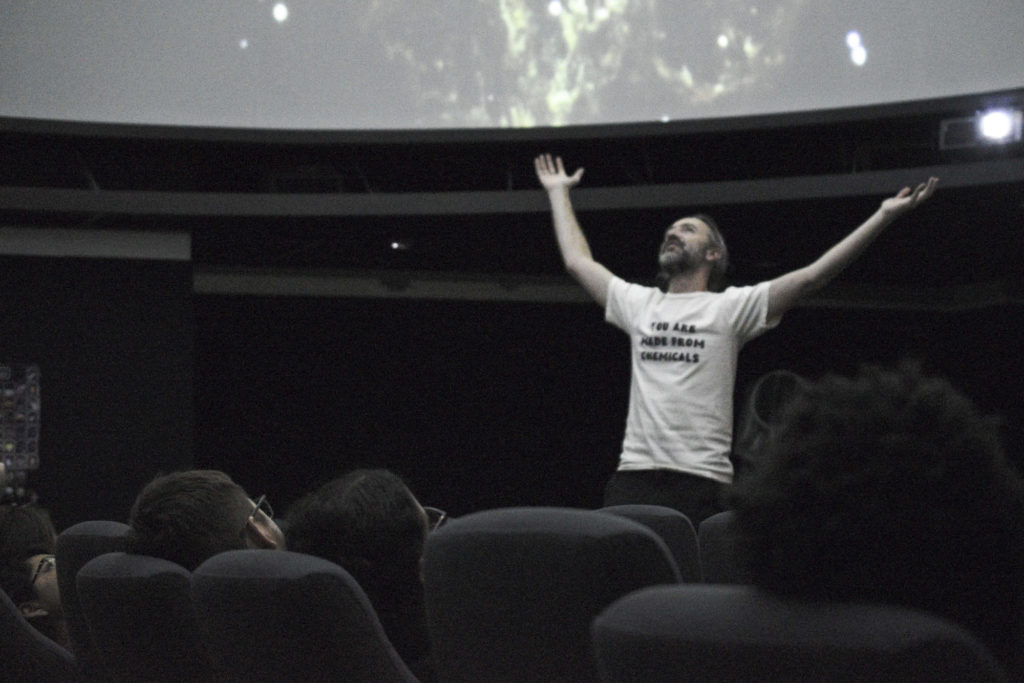The Milky Way galaxy may seem vast. But, when compared to the Laniakea Supercluster, which houses not only the Milky Way but about another 100,000 other galaxies it is just a speck in the fabric of the universe.
Pierce students were given the opportunity to experience a guided photorealistic tour of the supercluster on March 13, at the Pierce College Planetarium. It was organized by the Department of Physics and Planetary Sciences and presented by Professor Dale Fields.
Biology and Linguistics Major Omari Miller said he found it interesting how the event helped him view the universe.
“My reaction to the presentation has been consistent with me telling myself, ‘All right so I’m insignificant in the scheme of things,’ I knew the universe was super vast, but I hadn’t realized the extent to which we don’t know and to me that sounds crazy,” Miller said.
Miller said that he was taking an Astronomy class taught by Professor Fields and had previously experienced the presentation on his first day of Fields’ class.
“Well, it would seem to be the most important thing to take away from learning about space is that we can actually learn about our place in the universe itself when thinking about what’s going on here,” Fields said.
Fields believes that having young students and scholars work toward solving the mysteries of our universe, it will spawn a deeper existential dialogue to gain a broader understanding of ourselves.
“When seeing all of the Grandeur about the overall workings of the cosmos, we can recognize this is how humanity fits in, this is how tiny we are in the vastness of the cosmos itself, and that’s both a good thing and a bad thing, but I think it’s also a liberating thing. This is because with all the assets that are used to present this show we can see that humanity is a tiny portion of it and that’d remove the worries of destiny,” Fields said.
As the show ends and the lights return. Amongst the participating students of the cosmos, English Major Jose Caballero said he wanted to attend last year but was not able to and was excited they would be showing it this semester.
“I saw the flyer for the show at the Planetarium on Instagram. My astronomy professor last fall didn’t know how to operate the equipment in the Planetarium so hearing about today got me really excited to come.”
Fields said that they prefer to have two separate shows instead of combining them.
“We try to do two separate planetarium shows every single semester. Usually in the middle of the semester,” Fields said.
Fields said that the department moves the shows to different days of the week to give everyone a chance to come to experience the Planetarium.
“We also try to have two telescope nights outside each semester,” Professor Fields said. “The last one in February was canceled because we were clouded out but we’ll also have another one coming up in May so you can actually have the chance to look through a telescope with your own eyes and see what’s going on out there.”
The next show is slated to be in the Planetarium in the Center of the Sciences on Friday, April 12, from 5 to 7 p.m.






